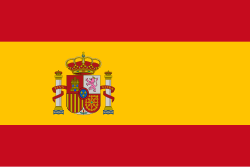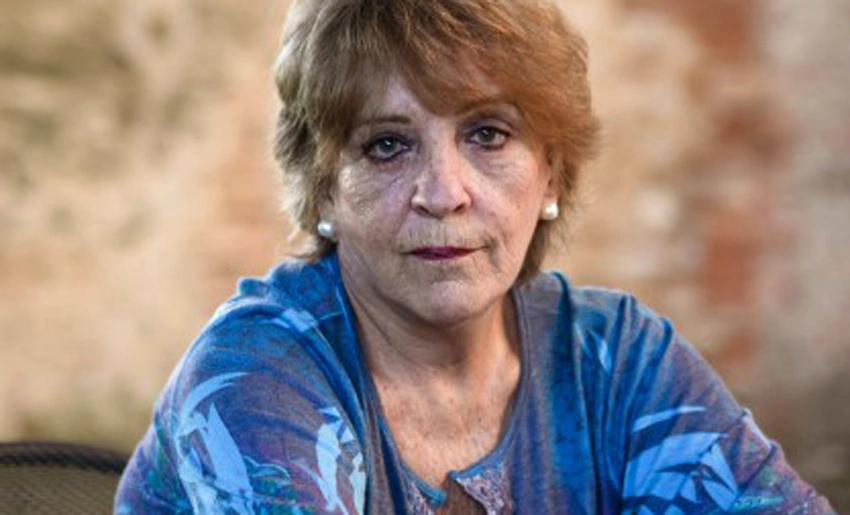It was in 2008, when Margarita –Maggie– Mateo (Havana, 1950) won the Alejo Carpentier Prize with her novel Desde los blancos manicomios, that she ventured to take the leap that, in the shadow of a legendary title like Ella escribía poscrítica -appeared in 1995. Whose revised and most recent edition is from 2005 by Ediciones Holguin– was already being noticed with very noticeable signs of substance and possession.
Author of Paradiso: la aventura mítica and Dame el siete, tebano. La prosa de Antón Arrufat, winners of the Alejo Carpentier Essay Award, from the Cuban Book Institute in 2002, and Enrique José Varona, from the Union of Writers and Artists of Cuba in 2013, her vocation as a storyteller is the watchword when it comes to her writing.
“In my case, essay and fiction have often run hand in hand, imbricated to a point where it has been almost impossible for me to distinguish the boundaries between one genre and the other. In short, it’s all part of the same thing: knowledge, writing, imagination, readings, among other things,” Maggie Mateo confessed to me in one of the thirteen interviews with Cuban writers that make up El sabor del instante (Ediciones Holguin, 2016).
Such confidence emphasizes her elegance of sharpness and her capacity for intuition. To intertwine with full mastery the insight of the essay and the breath of fiction in her most decisive texts. A condition that has distinguished her literary path, for which she deserved the National Prize.
The recent publication of Escritura sin rumbo, by Ediciones Vigía, from Matanzas, brings four pieces in which the fictional splendor is based on the accurate treatment of the reflexive baggage. The lateral look, the random tracing that has its effectiveness -to put it in the Mexican Carlos Fuentes’ way when he referred to the coordinates of the narrator- “from reduction to enlargement, from expulsion to inclusion, from paralysis to movement, from unity to difference”.
In this tracing, “the rhythms, the senses, of novelty in narrative” come together, to continue with what the author of The Most Transparent Region says. In Maggie Mateo’s case, such novelty has been her very personal seal, the indelible flow of her precisely restless style.
The book is composed of four “passages”, the term so dear to the German philosopher Walter Benjamin (1892-1940), to record the fractions that make up such a consummate experience: each one of them is a starting point for new incursions -and here her bet is firm-, that nostalgia for paradise to which the steps of the Jewish sculptor Dani Karavan seem to lead, overlooking the sea in Port Bou, a town in northeastern Spain that was Benjamin’s last stop before his death in the face of the horrors of war, and that helps to glimpse dilations. Likewise, Maggie’s writing leads to revisit nostalgia, visions from the Havana seawall, amplitudes of time, transit, the nostalgia for the sea.
The second one, Lápices, pinceles y muletas (Pencils, brushes and crutches), is a very personal glimpse into the secrets that dwell in Severo Sarduy’s work; the multiplicity of verbal and visual references that interweave the writing and painting of that unforgettable Camagüey native born in 1937 and who lived in Paris from 1960 until his death in 1993, to establish an extremely revealing panoramic view.
“Writing is painting”, says an annotation found in the margin of a page, about the author of the novel From Where the Singers Are. Which the author consults in a library. The observation allows her to subtly gloss Sarduy’s traces: painting read and writing painted.
The third one, Quebrar las olas, stands out as a vibrant and exact text, so painful in its observance of the figure that is discovered, the Puerto Rican poet Julia de Burgos, as captivating in its refined and moving perception, is an example of a request that has always run through Maggie Mateo’s work: that “Mare Nostrum” that protects the profile of the Antilles, names and works that have always deserved her greatest attention.
It is worth remembering what she says in the aforementioned interview: “Latin American and Caribbean authors are the closest to me. I have devoted many years to the reading, study and enjoyment of those literatures (…) I like to dialogue with those voices (…) And I do it sometimes in a more explicit way, sometimes in a more veiled way”.
The fourth and last one, Juego de orcos -the jewel of this volume carefully edited by writer Laura Ruiz- can be read -especially by those initiated in the enjoyment of Margarita Mateo’s work- as an apostille to her novel Desde los blancos manicomios, which forms her triptych par excellence together with Ella escribía poscrítica and Dame el siete, tebano.
Like a feminine transcription of Stephen Dedalus’ character, or, if you prefer, a transversal deference to Joyce and his Dublineses in the Havana key of El Vedado -there is a Spanish translation by Guillermo Cabrera Infante, once a famous neighbor of that area-, the author peeks through the mirror -like Lewis Carroll’s Alice-: evocation moves on skates.
Aimless Writing makes possible the encounter between the astuteness of the essay and the boldness of fiction referred to at the beginning of this column. But, surely, some readers might inquire whether there is a preponderance of either of these two possibilities. Whether the work of the essayist or the deployment of the narrator has greater emphasis.
Maggie Mateo could say, like Milan Kundera, that “the beautiful, the ugly, the sublime, the comic, the tragic, the lyrical, the dramatic, the action, the vicissitudes, the catharsis… (…) are clues that lead to different aspects of existence inaccessible by any other means”. Thus, here is the fortunate thing about the art of memory when Maggie Mateo returns as a narrator.
Translated by Aliani Rojas Fernandez
- Maggie Mateo returns as a storyteller - 21 de May de 2025
- Farewell to Mario, Don Miguel’s disciple - 16 de April de 2025
- The savage detective and the unsubmissive translator - 7 de April de 2025

